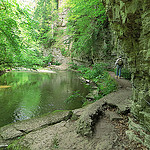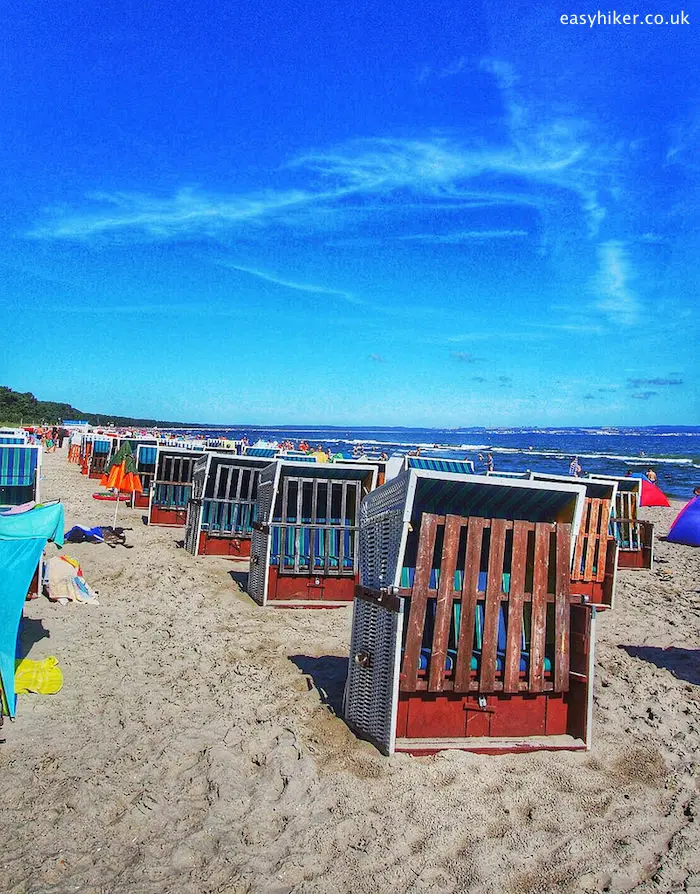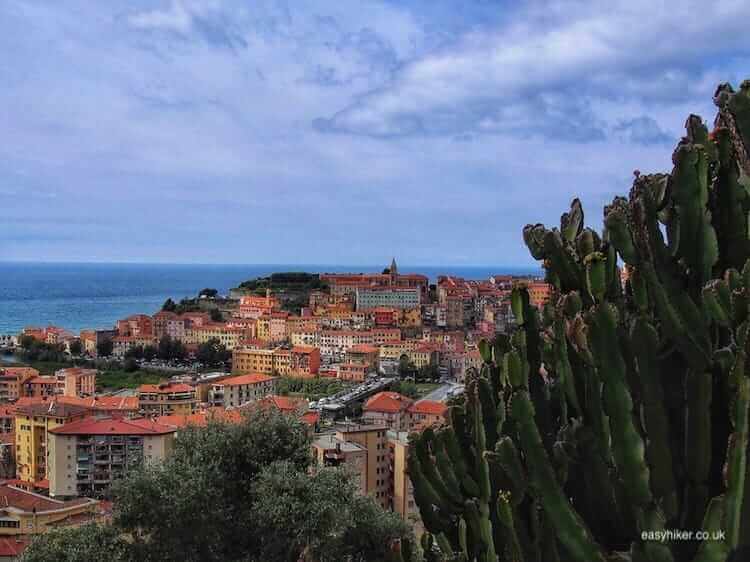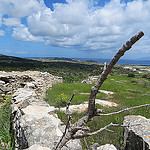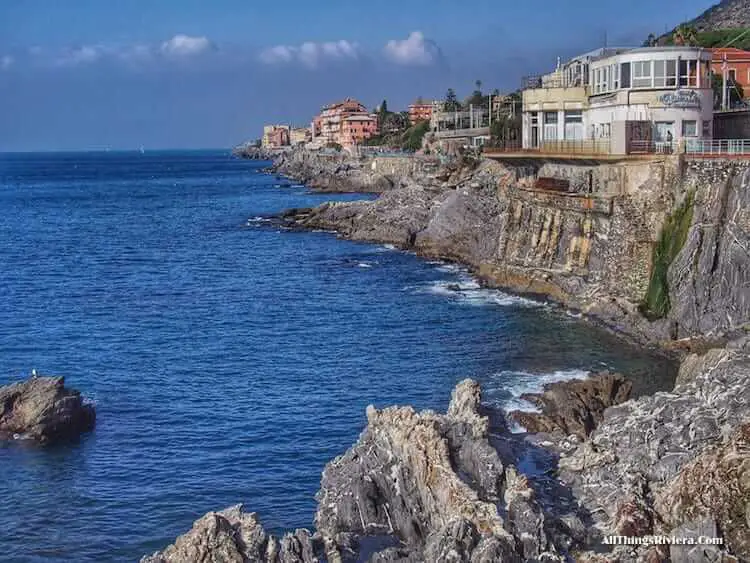Day hiking in Germany
Guns and Forest on a Hiking Trail?
Over the next few months, I am going to tell you – in a loose series of posts – a little bit about day hikes in the Ruhrgebiet, Germany’s old industrial heartland.
The Ruhrgebiet may not be an area that many foreigners will want to visit for its natural beauty. It is, after all, not the Rhineland or the Black Forest. Even if it no longer powers Germany’s economic engine, it is still an area with many companies that have a global footprint, and people from all over the world come here routinely for business.
What can they do in their spare time? The Ruhrgebiet, after all, is not Munich or Berlin. It has few cultural distractions and few famous landmarks that would be worth visiting.
If you are stuck in the Ruhrgebiet and want to go on a day hike, you can, of course, set out for one of the well-known trails in the wider neighbourhood.
But even the northernmost destinations of the Rheinsteig are still a 2 hour train ride away, and you will be faced with a similar problem if you want to go to the Münsterland or the Sauerland, two of the state’s other fairly popular hiking options.
Once you add the time it takes you to get to your host town’s central station, you will spend a total of 5 to 6 hours of your hiking day on some sort of public transport – more than you will have left for the actual hiking trail itself.
Which is why your best option is to look for somewhere nearer. And believe it or not: there are quite a few possibilities.
Between scattered settlements and old factories, there are plenty of green spaces in the Ruhrgebiet. Almost every first-time visitor, having heard of the Ruhrgebiet’s grim reputation, is surprised to pass working farms, open meadows and forests on his way from one town to the other.
But while we will certainly feature day hikes that give you plenty of that, we will also seize the opportunity of taking in parts of the industrial landscape: canals, deserted factories and careworn mining towns that often have a sort of melancholic beauty that is unique to the western world’s strange, semi-abandoned industrial wastelands.
We will begin, however, with the classic day trip destination of the Ruhrgebiet’s locals: Lake Baldeney near the city of Essen.
Guns and forests on a day hike
Lake Baldeney is, in fact, not really a lake but a section of the river Ruhr that was artificially widened to slow down the water flow in order to enhance the river’s self-cleansing powers.It was constructed during the First Great Depression as a Roosevelt-ian job-creation-cum-infrastructural-investment scheme, Germany’s version of the Hoover Dam if you like.
In the early 1930s, the construction site gave some sort of below-minimum-wage employment to thousands of poorly equipped German “volunteers” who were lured to the site mainly by the promise of one warm meal a day.
This does not mean, however, that Lake Baldeney could even remotely rival its Rocky Mountain contemporaries in terms of grandeur. In fact, it does not even have actual concrete dams on either side but rather modest weirs that regulate the flow of the Ruhr.
Three S-Bahn (city rail) stations provide easy access to Lake Baldeney, all only a short ride away from Essen central station: Essen-Werden and Hügel (on the lake’s western end, line S6) and Essen-Kupferdreh (on the lake’s eastern end, line S8).
There is a 16 km long path that takes you once around the lake (bridges across the weirs connect the two banks on either end of the lake). If you find that too long, you can also walk from Werden or Hügel to Kupferdreh (8 and 6 km respectively), and in the summer months (from late April to early October), boats circulate between five stations around the lake, offering you an even wider selection of routes. This may be a good option if you are bringing kids along, particularly so since these boats are fairly reasonably priced (adults pay € 2.50 for a single stop, children € 1).
But plan your walk well and make sure you don’t arrive late at your “waterbus stop”, particularly not on weekdays when boats only come around every two hours (hourly on Saturdays and Sundays).
The south bank of the river is quieter and more bucolic, particularly once you have left the outskirts of Werden, where the Ruhr is lined with jetties and rowing clubs.
Near Kupferdreh in the east, Haus Scheppen – originally the farm house of a medieval abbey – now accommodates a restaurant. The north bank is a little livelier, and there are also more things to see: the castle ruins of Isenburg (built in the 12th, destroyed in the 13th century, demonstrating that there was life in the Ruhr valley before coal and steel), Baldeney Castle, formerly a moated castle and for a long time a locally famous beer garden until it was devastated by fire in 2004, and Villa Hügel, by far the top tourist attraction of the area and, actually, the main reason why visitors from Germany and all over the world are coming to Lake Baldeney in the first place.
Villa Hügel is the former residence of the Krupps, Germany’s foremost family of industrialist and gun manufacturers whose rise and decline – from solid prosperity through the megalomania of the Imperial years to their eventually fatal involvement with the Nazi regime – mirrors and reflects so much of recent German history.
Villa Hügel is located immediately above Hügel station which was actually built as a private stop for Krupp’s house guests and opened by Kaiser Bill himself (who came here so often that he had his own private guest room in the Villa. His father and grandfather had treated the Krupps and their presumptions of grandeur with rather more aristocratic disdain.)
If you plan a visit: do yourself a favour and watch, as a sort of mental preparation (or just for a laugh), some excerpts on You Tube from Luchino Visconti’s notoriously camp movie à clef The Damned, a collage of recurring motives from the Krupp family history. (From the trailer: “To cut the world’s throat, you need steel, gold, and treachery. One family had it all.”).
Visconti had originally wanted to shoot the movie “on location” at Villa Hügel but was refused shooting permission. Once you have watched a little of his film, you will understand why.

